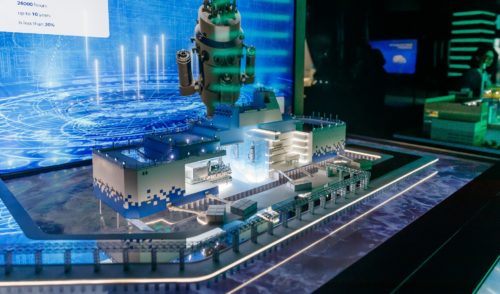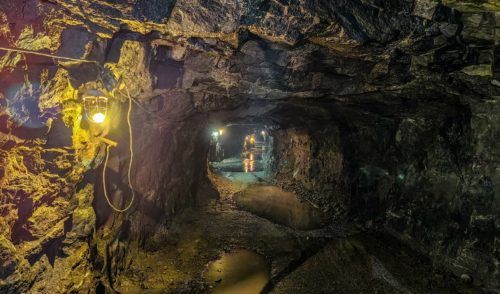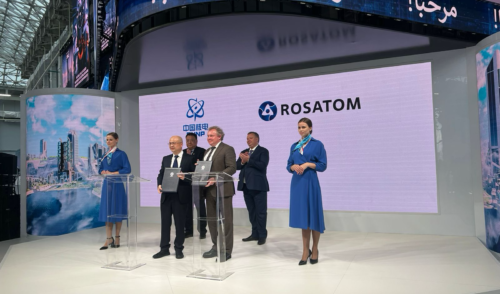
India Received New Power Source
back to contentsThis happened only a month and a half after the controlled chain reaction was initiated in the reactor, and it achieved criticality.
“The connection went just as planned. The reactor unit passed all low-power tests in accordance with the commissioning program; the systems and components are found to comply with the design,” said Andrei Lebedev, vice president of Rosatom’s engineering group ASE in South Asia.
In the near future, the unit’s power will be gradually increased until it reaches 100% of the design capacity, with the reactor’s dynamic stability tested at variable power. After the power ascension tests are completed, the reactor will run for 72 hours at the rated power. If all the tests are passed successfully, the Indian customer will sign a preliminary acceptance report for Unit 2 of the Kudankulam nuclear power plant.
According to ASE CEO Valery Limarenko, bringing Kudankulam Unit 2 online is another seal of approval for nuclear construction competencies of Rosatom’s engineering companies. “This operation was preceded by an extensive effort in installing and fine-tuning the equipment. Smooth, incident-free connection proves that our work was done to a high standard. The equipment functions as it should,” Valery Limarenko said. The CEO of ASE also noted that Kudankulam Unit 1 had been operating safely as designed at 1,000 MW and supplying South India with electric power since February 2016.
Information about the start of power generation is already included in the IAEA Power Reactor Information System (PRIS) containing data on nuclear power units and reactors worldwide.
The first two units at Kudankulam bring a 40% increase in the Indian power grid capacity and lay the groundwork for the country’s industrial development, says Ivan Andrievsky, a Russian energy expert and chairman of the Board at 2K (a Top-10 Russian engineering company).
According to him, South India, which used to be short of electricity, will now have a reliable source of power. Apart from Tamil Nadu where it is located, the Kudankulam nuclear power plant will supply electric power to Kerala, Karnataka, Andhra Pradesh and the Union Territory of Puducherry.
As soon as Unit 2 begins commercial operation, which is expected in several months, India’s aggregate nuclear generation capacity will reach almost 7,000 megawatts.
The expert also said that New Delhi pinned its hopes for the ambitious development of India’s national nuclear program on Russian nuclear companies, which ‘fully lived up to the expectations’.
“Construction of Units 3 and 4 will officially begin as early as April 2017; some orders for long-lead equipment have already been placed,” Andrievsky reminded.
Meanwhile, Moscow and New Delhi are in the run-up to signing a framework agreement for the construction of Kudankulam Units 5 and 6. And this is not a limit to the Russian-Indian cooperation. In December 2014, the two countries signed a document defining their strategic vision for the construction of Russian-designed power reactors in India. According to the document, Russia plans to build up to 25 reactors in the Asian country. “These plans speak for the parties’ intention to maintain long-term, beneficial relations,” Andrievsky said.
The grid connection is symbolic for Russia as it signals the end of the first and therefore most important stage of international expansion that began back in the 1990s as an attempt to promote domestic nuclear technologies abroad, says Alexei Uvarov, who is the chief editor of the reputable online nuclear news portal AtomInfo.ru.
In the 1990s, the Russian nuclear industry, which was in difficult times following the collapse of the Soviet Union, received orders for the construction of five nuclear power units, including Bushehr-1 in Iran, Kudankulam-1 and Kudankulam-2 in India, and Tianwan-1 and Tianwan-2 in China.
According to Uvarov, the completion and commissioning of these projects have had a very positive impact on Russia’s reputation as a nuclear vendor. Foreign customers received a powerful message that Russian designers and engineers can be fully trusted to build a nuclear station.
“What happened in just a few years is often called Rosatom’s global expansion,” the expert says. “The Russian nuclear corporation is the world’s leader in terms of reactor units under construction on the international market. As at the end of 2015, Rosatom had contracts for the construction of 36 reactors and was negotiating, or bidding for, 23 more reactor projects.”




